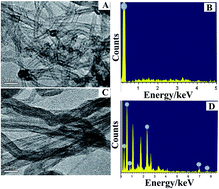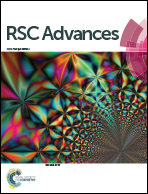A sensitive and selective enzyme-free amperometric glucose biosensor using a composite from multi-walled carbon nanotubes and cobalt phthalocyanine
Abstract
In the present study, a simple and sensitive amperometric enzyme-free glucose sensor was developed at a multiwalled carbon nanotube and cobalt tetrasulfonated phthalocyanine (MWCNT–CoTsPc) modified electrode. The morphology of the fabricated composite was characterized and confirmed by transmission electron microscopy and UV-Vis spectroscopy. UV-Vis spectroscopy results confirmed that the MWCNT–CoTsPc composite was formed via the strong π–π interaction between CoTsPc and MWCNT. Compared with pristine CoTsPc, the MWCNT–CoTsPc composite modified electrode showed a higher electrocatalytic activity and lower overpotential towards the oxidation of glucose. Amperometric i–t technique was used for the determination of glucose. The response of glucose was linear over the concentration ranging from 10 μM to 6.34 mM with a sensitivity of 122.5 μA mM−1 cm−2. The response time of the sensor was determined to be 2 s with a limit of detection of 0.14 μM (S/N = 3). The fabricated sensor also exhibited a good selectivity in the presence of common interfering species. In addition, the fabricated sensor exhibited special advantages, such as low working potential, good sensitivity along with good repeatability and reproducibility, for the determination of glucose.


 Please wait while we load your content...
Please wait while we load your content...